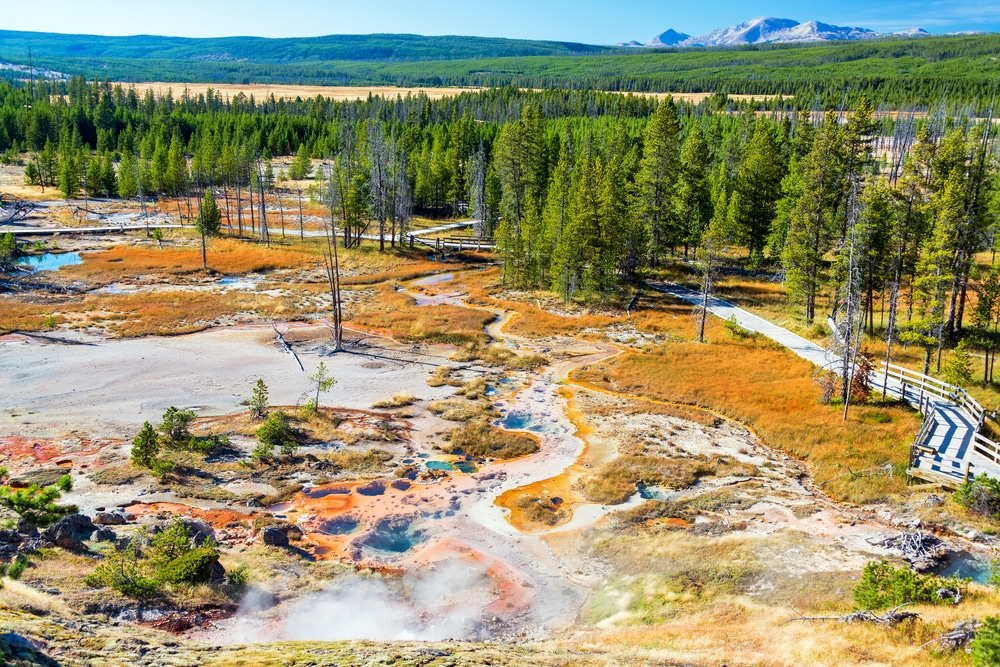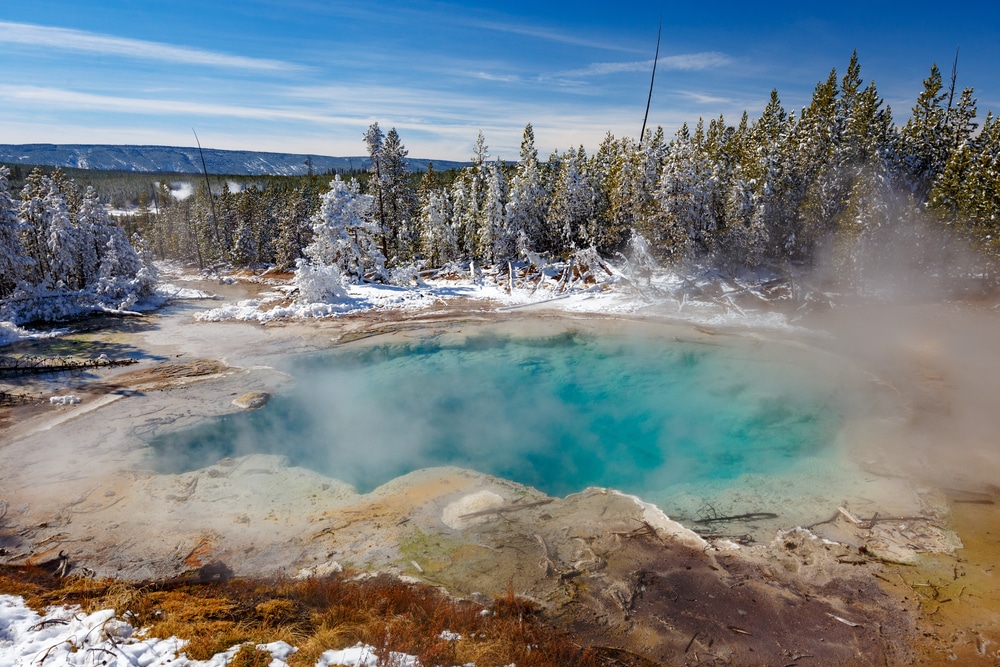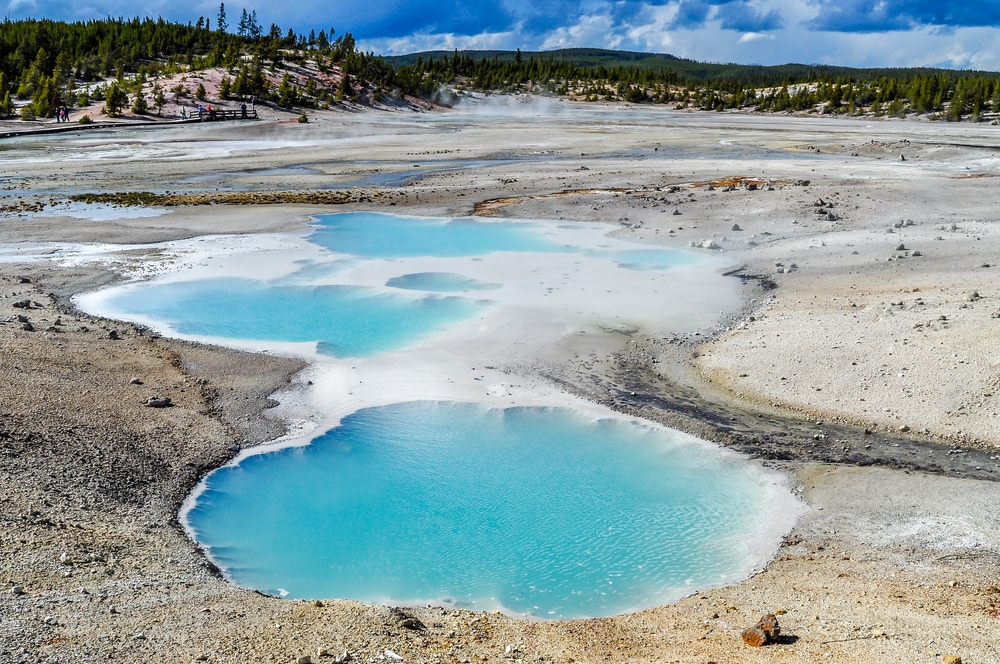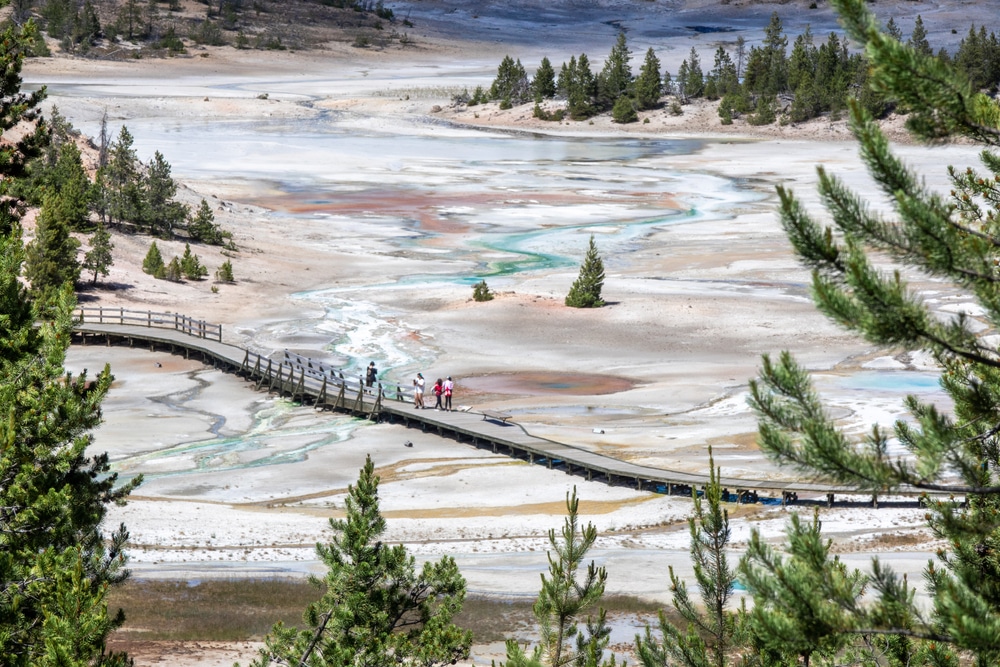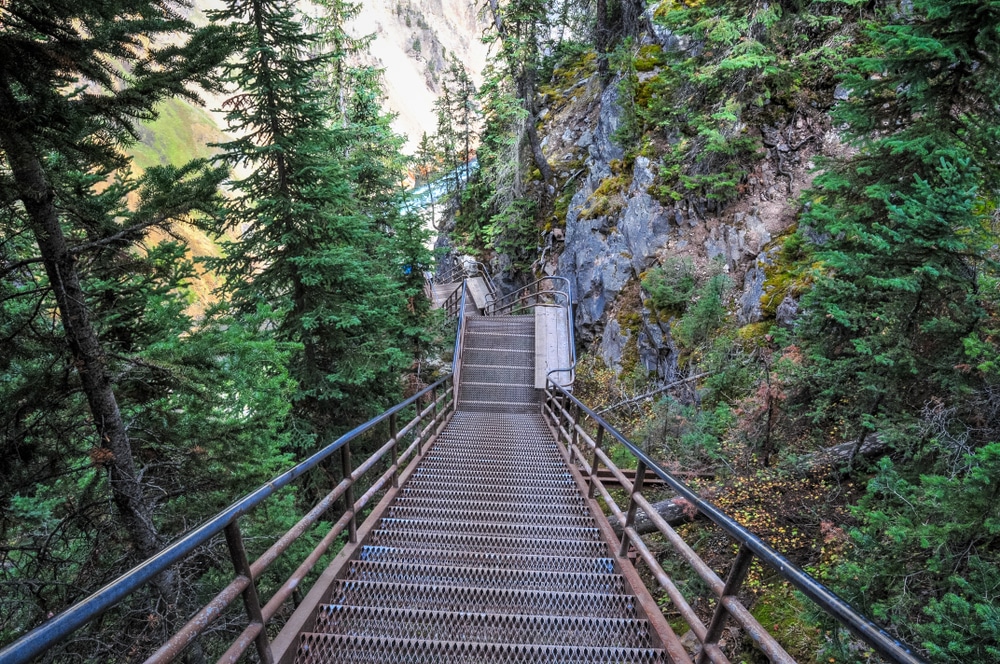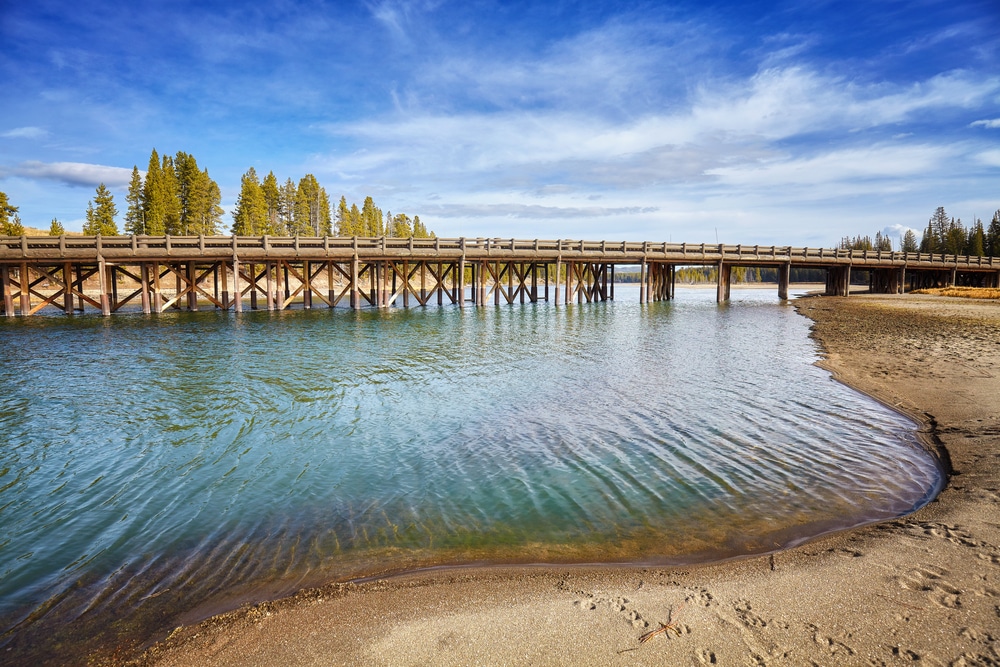Norris Geyser Basin, located in the northwest section of Yellowstone National Park, is one of the oldest and most dynamic of the park’s hydrothermal areas. This unique basin is renowned for its extreme temperatures, acidic conditions, and the presence of geysers, hot springs, and fumaroles that vary dramatically in activity and appearance. The basin’s dynamic nature is due to its location at the intersection of multiple major fault lines and its position over one of the most volatile sections of the Yellowstone volcanic system. This combination of geological factors makes Norris one of the most fascinating and unpredictable environments in Yellowstone.
Geological Background
Yellowstone National Park sits atop a volcanic hot spot, a region where heat from the Earth’s mantle is exceptionally close to the surface. Norris Geyser Basin is directly influenced by this geothermal activity, which heats groundwater that percolates down through the earth’s crust. When this superheated water finds a path to the surface, it results in the spectacular geothermal features seen in the basin.
The area is divided into two major sections: the Porcelain Basin and the Back Basin. Each has distinct characteristics shaped by their underlying geology.
Porcelain Basin
The Porcelain Basin presents a stark, almost otherworldly landscape. It lacks the vegetation seen in other parts of Norris and is characterized by a whitish, barren ground composed of siliceous sinter, a deposit left by mineral-rich water as it evaporates. This basin’s open terrain allows visitors to observe a plethora of active geothermal features, including boiling springs, small geysers, and vents that emit steam and gases—referred to as fumaroles.
Back Basin
In contrast, the Back Basin is a wooded area with features more spread out than in Porcelain Basin. The setting among the trees makes the geothermal features here appear more dramatic. Notable geysers in this area include Steamboat Geyser, the world’s tallest currently-active geyser, which can erupt to heights of over 300 feet.
Hydrothermal Features
Norris Geyser Basin is home to some of the park’s most varied and spectacular hydrothermal features.
Geysers
- Steamboat Geyser: This geyser is the star of Norris Geyser Basin. Its major eruptions are unpredictable but awe-inspiring, sending boiling water hundreds of feet into the air. When not erupting spectacularly, Steamboat emits significant steam that can be seen from afar.
- Echinus Geyser: Known for its acidic water, Echinus was once one of the most popular predictable geysers but has become less active in recent decades.
Hot Springs
- Emerald Spring: Aptly named for its deep emerald color, this hot spring showcases the stunning beauty of Norris’s thermal waters.
- Cistern Spring: Located near Steamboat Geyser, this spring fills a pool that can overflow when Steamboat erupts, showing the interconnected nature of the basin’s hydrothermal system.
Fumaroles
The basin also features numerous fumaroles, the hottest type of hydrothermal activity in the park. These steam vents are particularly impressive at Norris, with some reaching temperatures over 280°F (138°C).
Scientific Importance
Norris Geyser Basin is not just a tourist attraction; it’s also a valuable site for scientific research. The extreme conditions here help scientists understand not only geothermal activity but also the possibilities of life in extreme environments on Earth and potentially other planets. Microorganisms found living in the hot, acidic waters of Norris are of particular interest in the study of extremophiles and astrobiology.
Visitor Experience
Visitors to Norris Geyser Basin can explore the area through a network of boardwalks and trails that ensure safety from the hot and unstable ground. The Norris Geyser Basin Museum and Visitor Center offers exhibits on the geothermal features of the park and the natural forces that create them.
Best Practices for Visitation
- Stay on Designated Paths: Given the dangerous conditions, it is crucial for safety and conservation that visitors stay on the boardwalks and designated paths.
- Visit During Different Times of the Day: The appearance of geothermal features can change dramatically with the time of day, influenced by temperature and lighting.
- Respect Closure Signs: Due to the dynamic nature of the geothermal activity, areas of Norris can be temporarily closed for safety reasons.
Conservation Challenges
Managing Norris Geyser Basin involves balancing public access with the need to preserve its delicate ecosystems and geological features. The National Park Service works to protect this unique environment while accommodating the hundreds of thousands of visitors drawn to its natural wonders each year.
